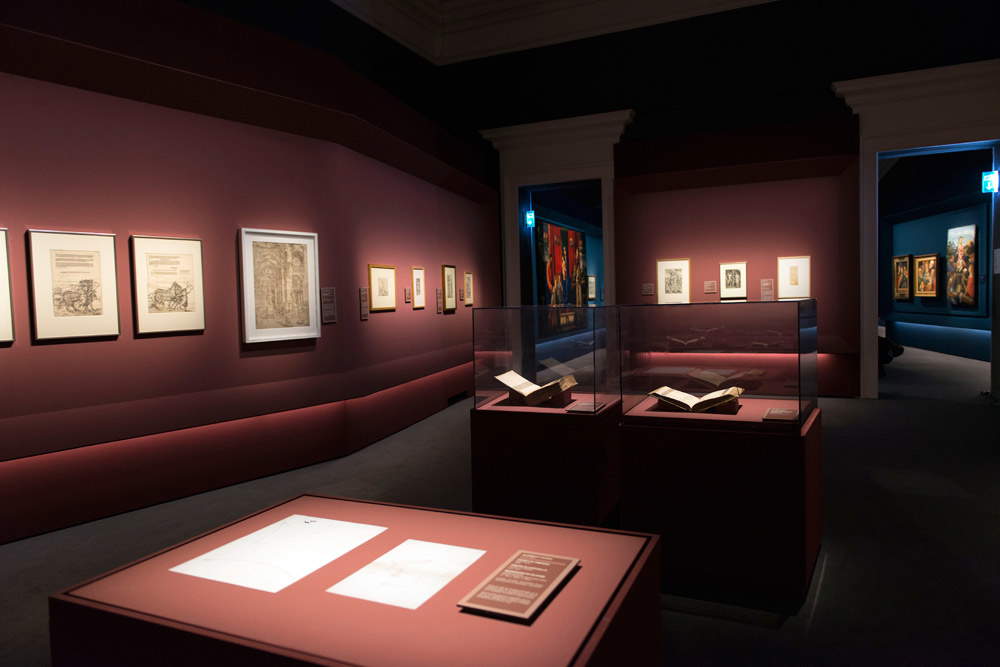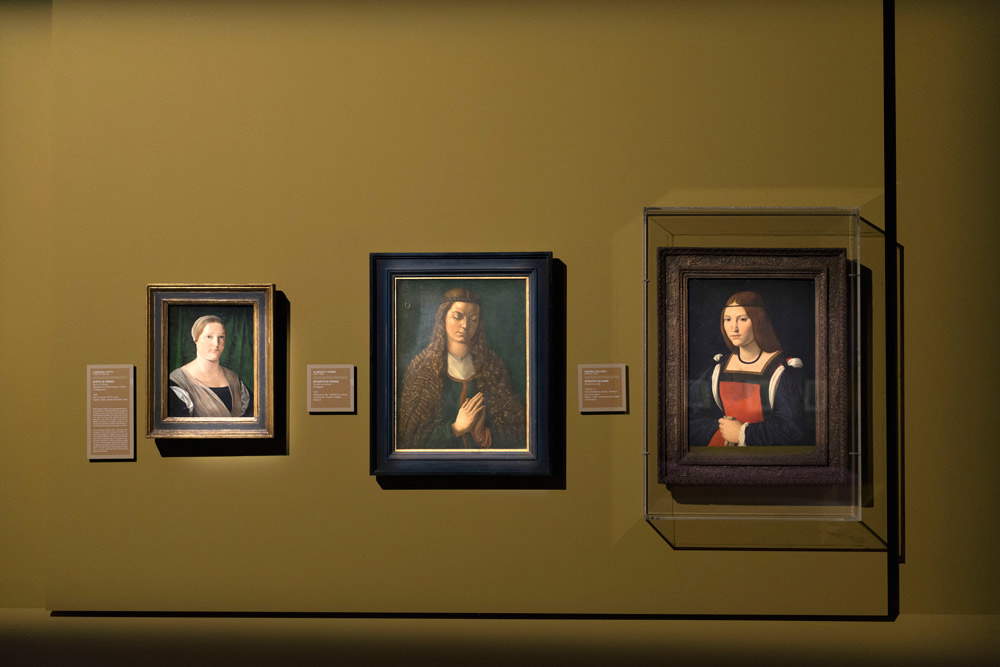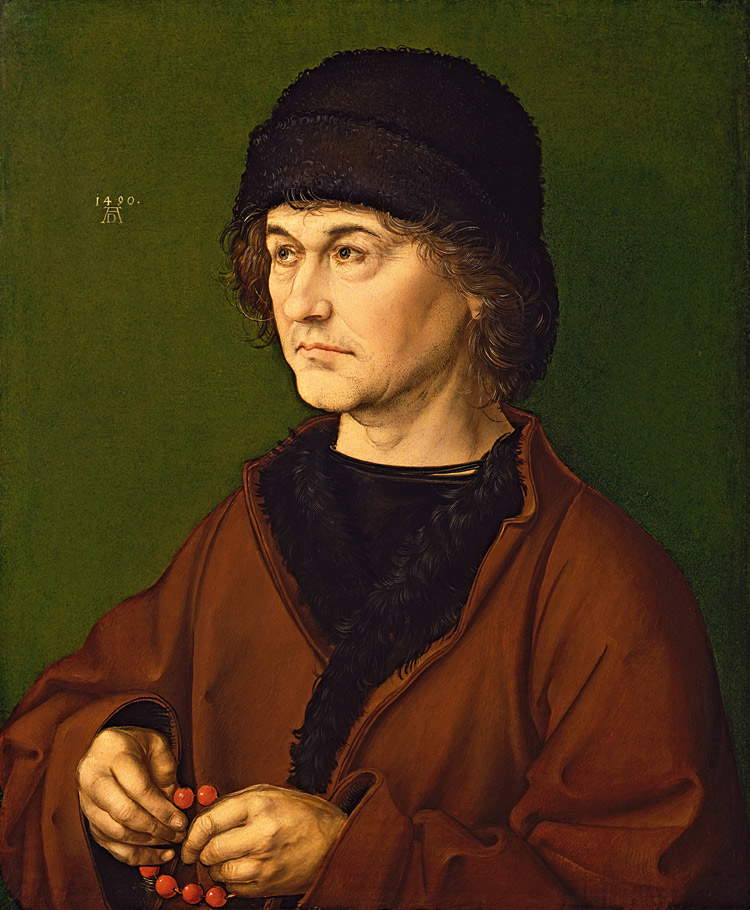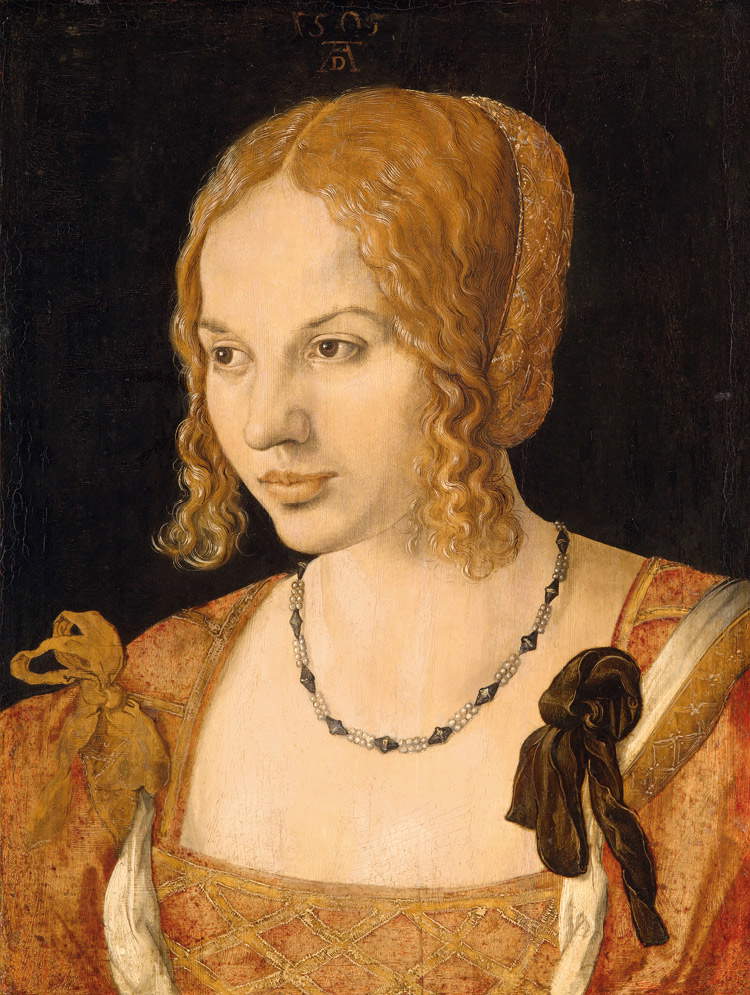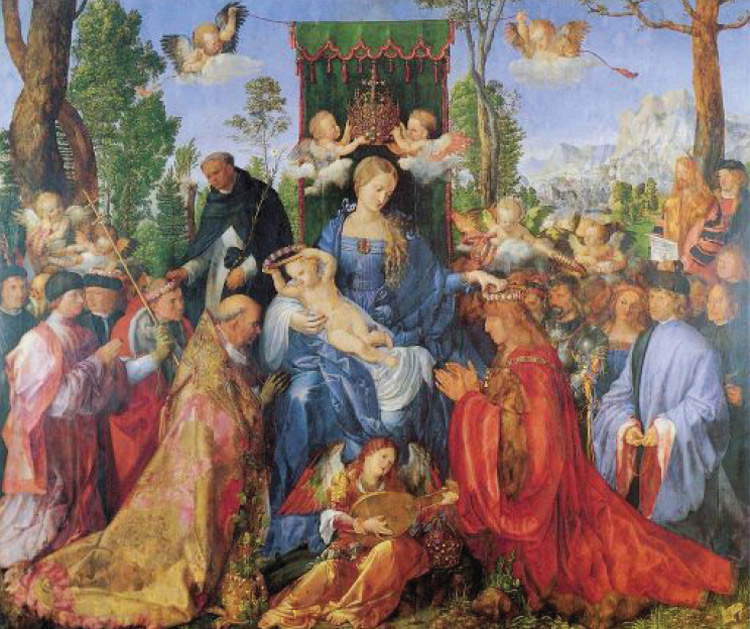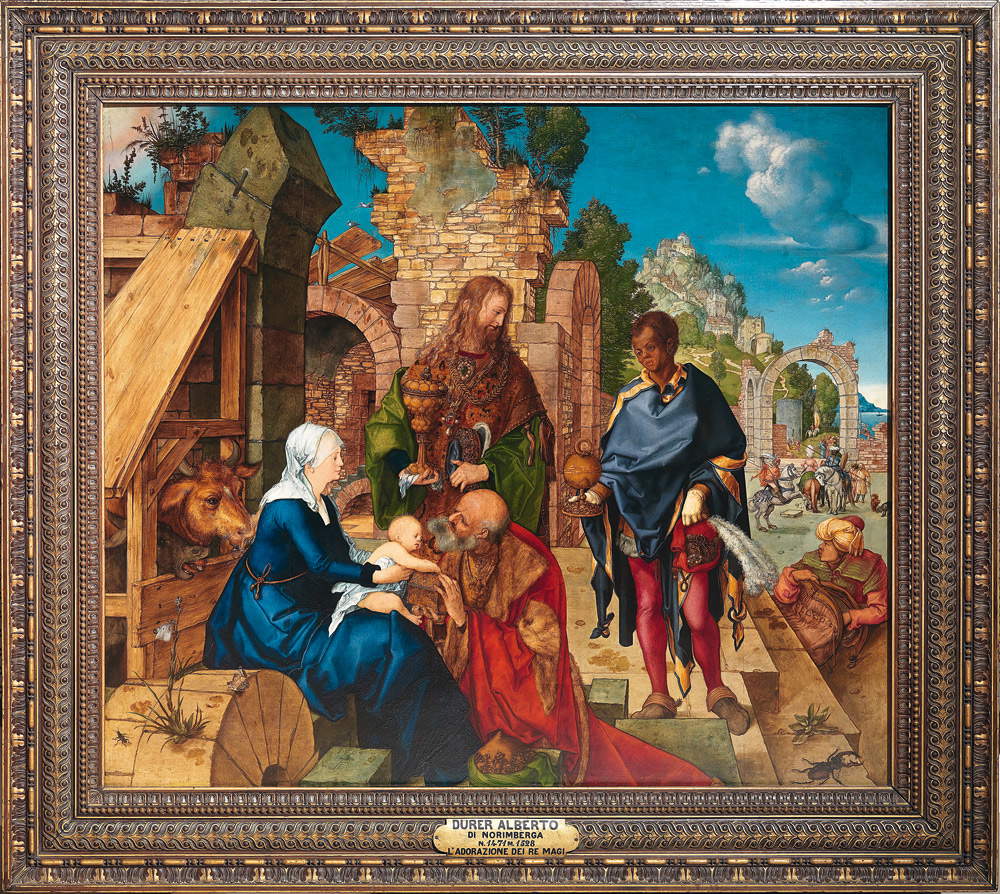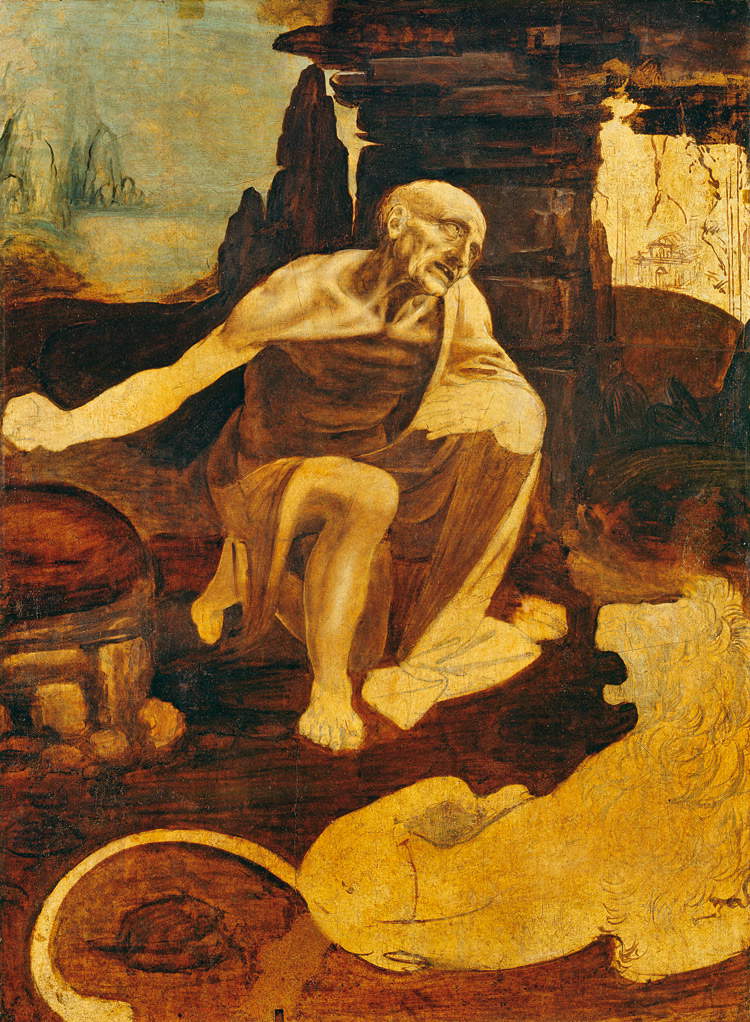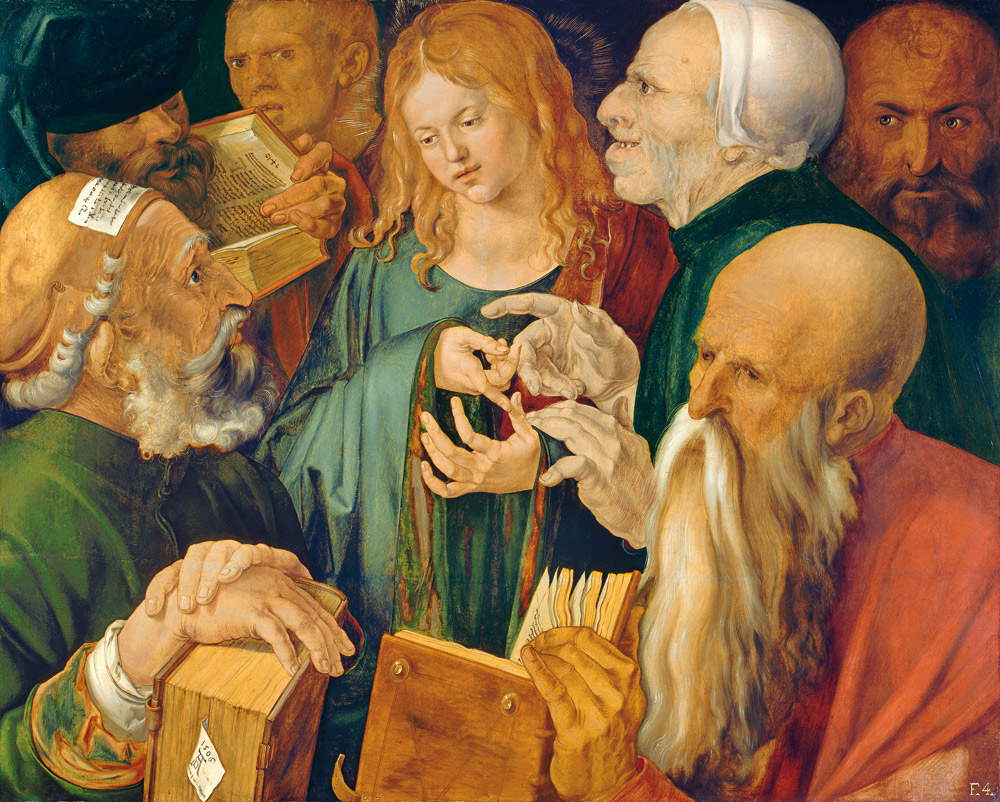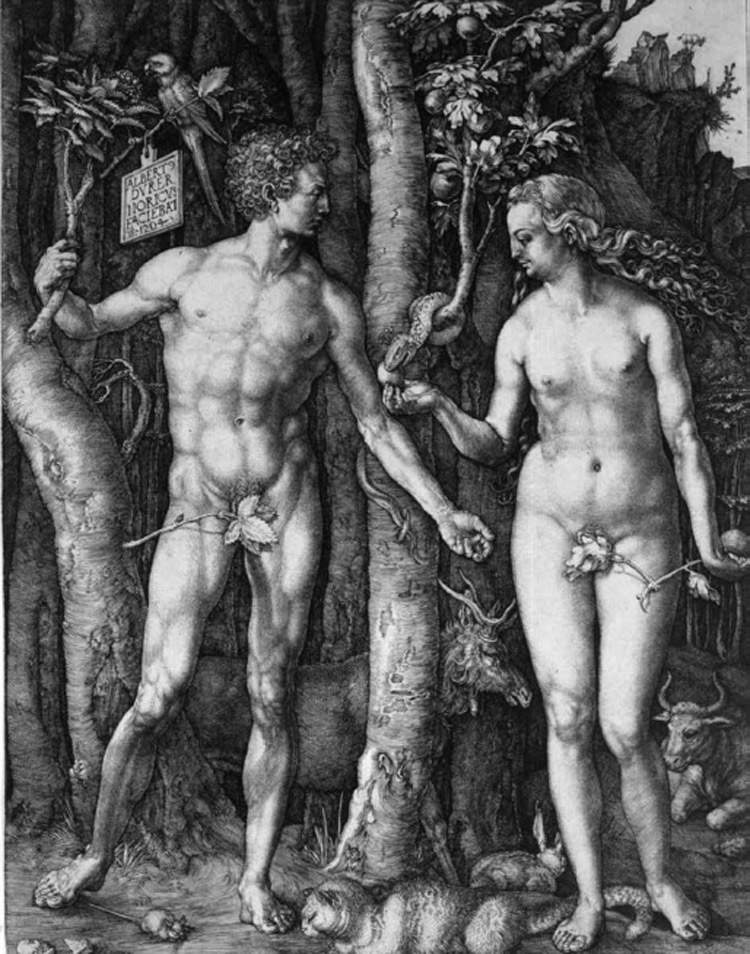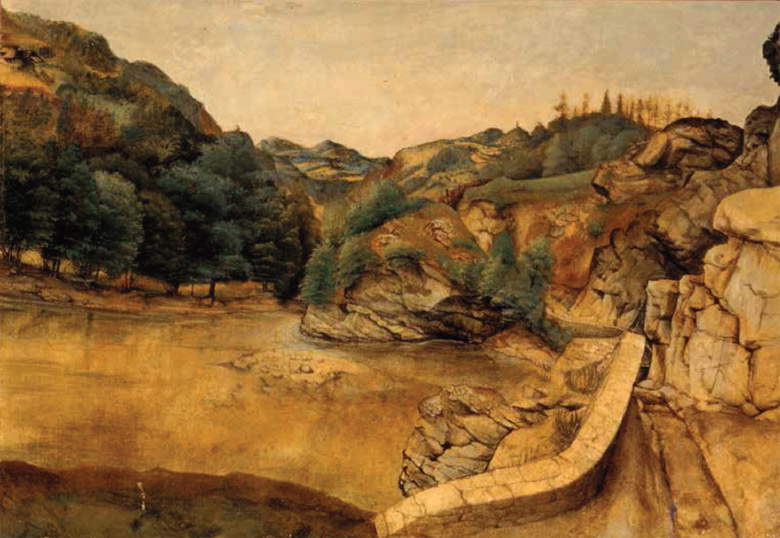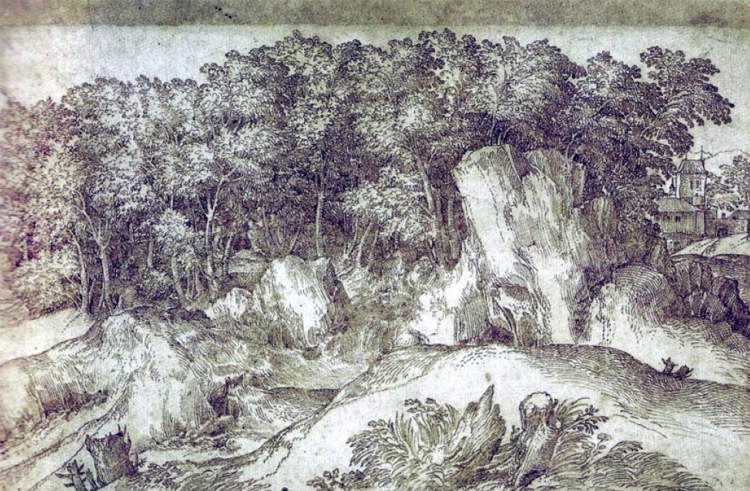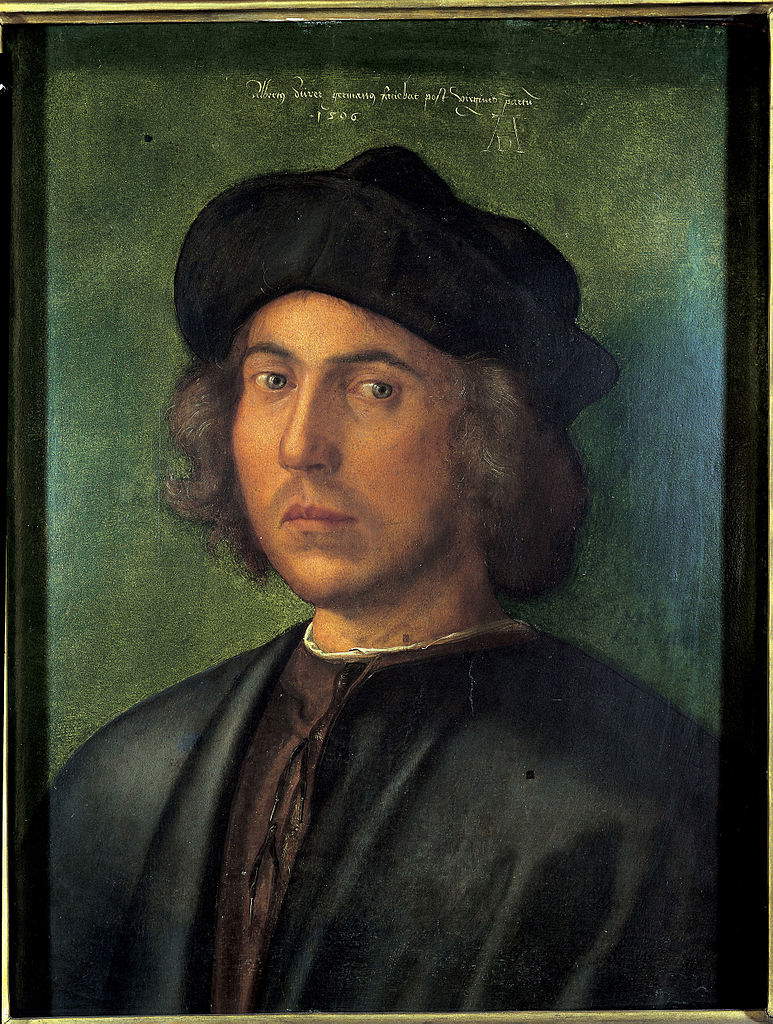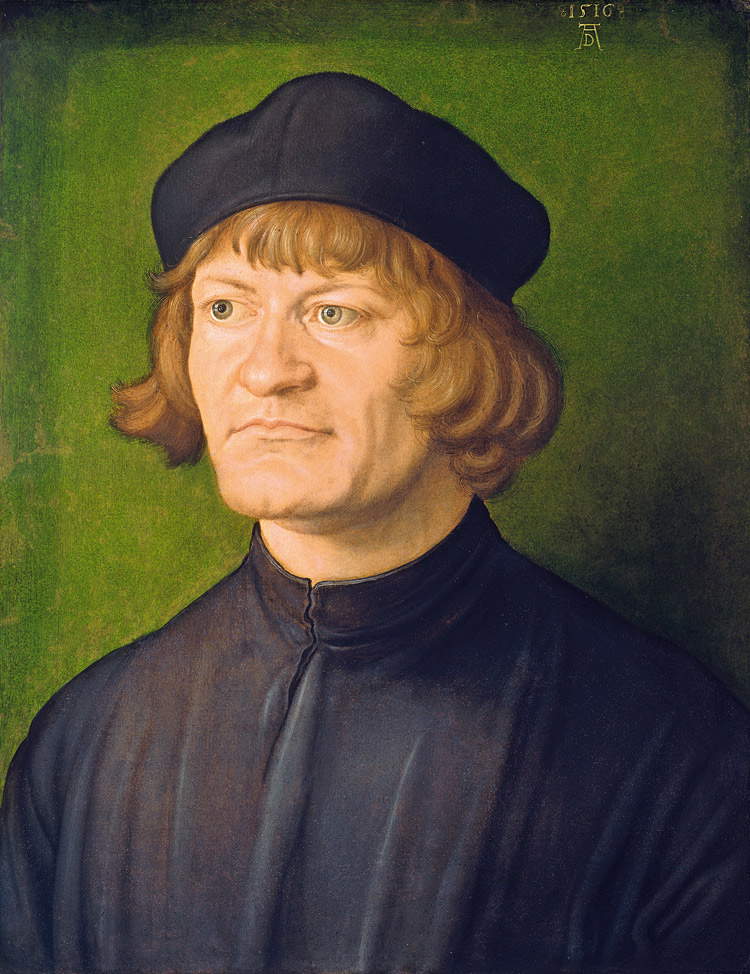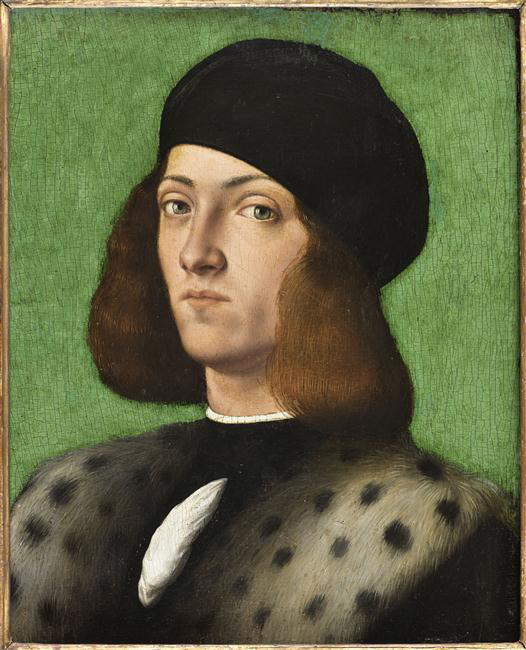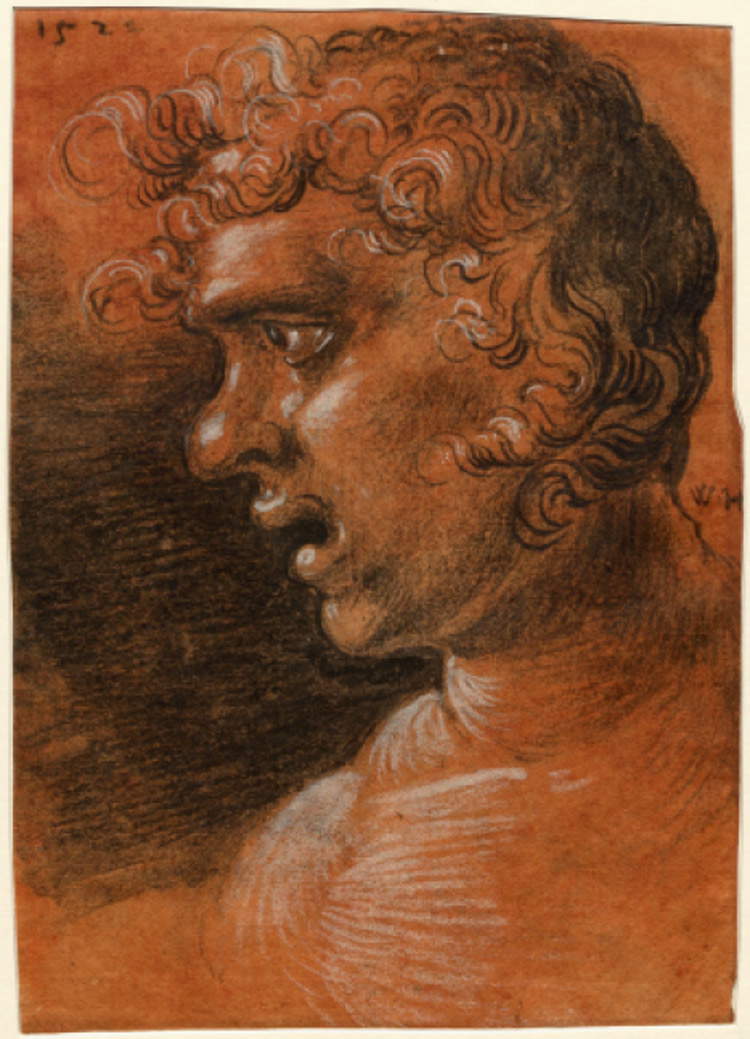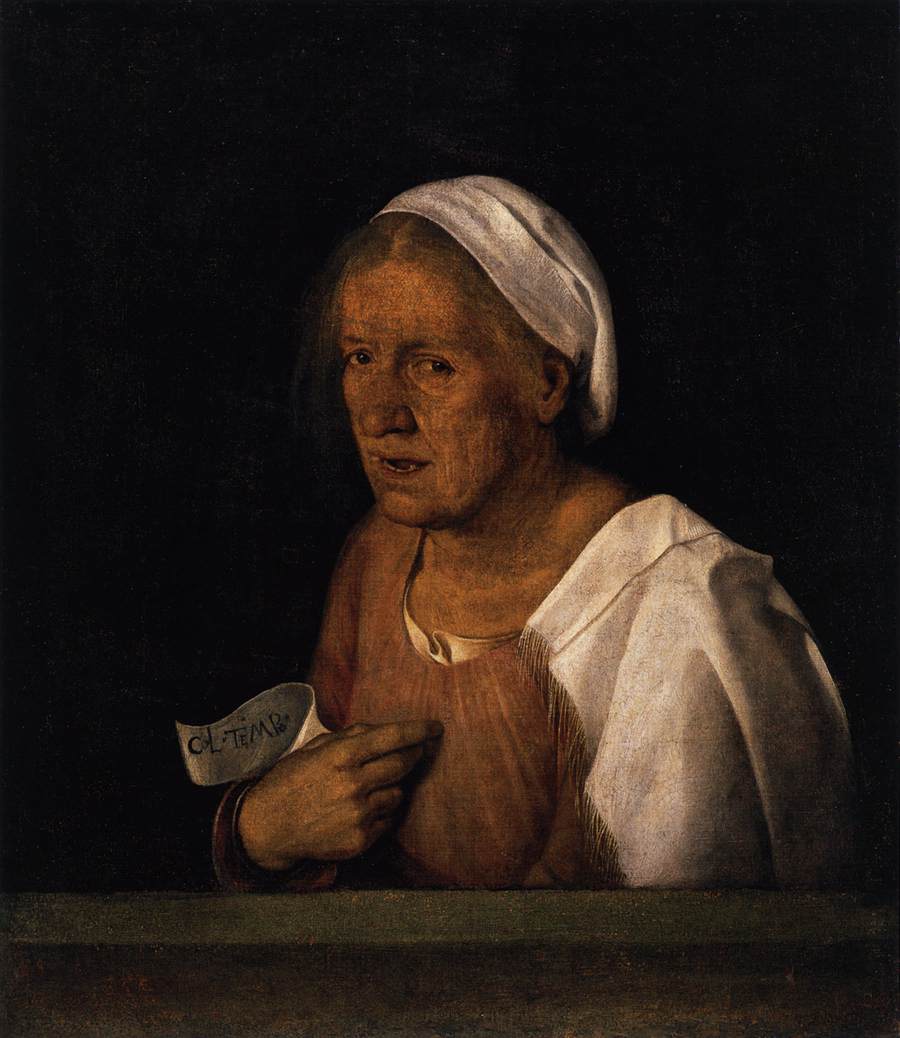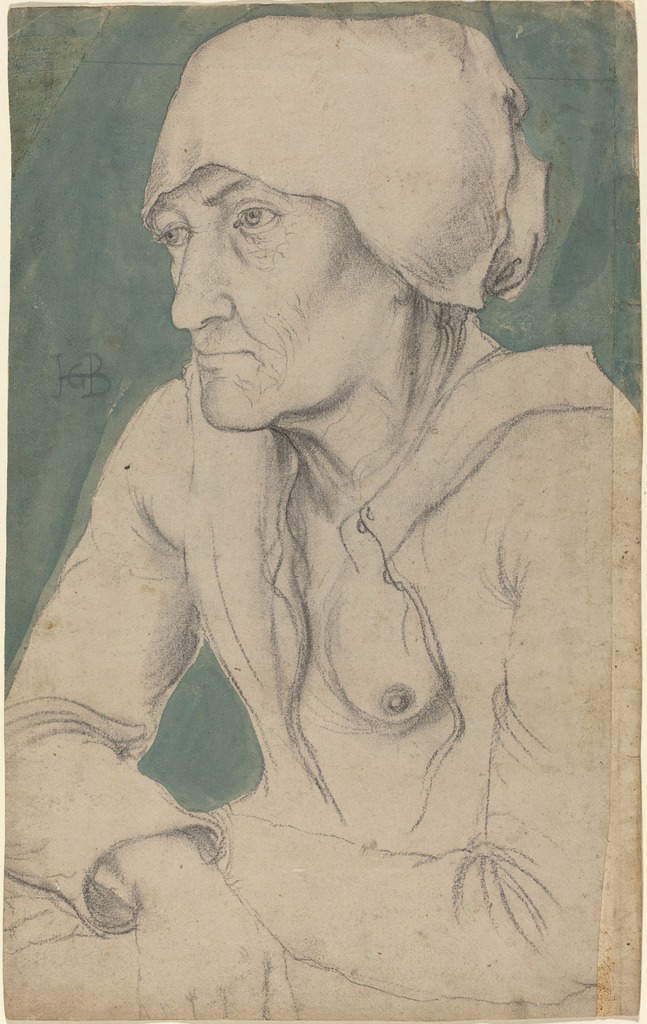by Federico Giannini (Instagram: @federicogiannini1), published on 23/05/2018
Categories: Exhibition reviews
/ Disclaimer
Review of the exhibition 'Dürer and the Renaissance between Germany and Italy' in Milan, Palazzo Reale, February 21 to June 24, 2018.
It really seems that Albrecht Dürer (Nuremberg, 1471 - 1528) has timidly begun to share, malgré lui, the fate that has long since befallen his other illustrious colleagues from different eras (Caravaggio, Frida Kahlo, Andy Warhol and assorted Impressionists, just to name a few examples), who share the sole fault of having a name that guarantees easy public appeal to the organizers of blockbuster exhibitions. So, here comes to Milan a new monograph on the German genius when, in the last ten years alone, the artist has been the protagonist of two major exhibitions (the one at the Scuderie del Quirinale in 2007, and the one at the Städel Museum in Frankfurt in 2013-2014), as well as a profusion of minor reviews built mainly around his graphic work. Above all, it is necessary to consider the fact that the exhibition Dürer and the Renaissance between Germany and Italy, running at the Palazzo Reale until June 24, 2018, does not present any major scholarly novelties. Remaining within the walls of the Milanese institute, a comparison can be made with the previous exhibition on Caravaggio: there, too, it was an eminently blockbuster exhibition, but at least it should be given credit for having proposed some novelties on some coeval documents, as well as the results of the radiographic investigations conducted on the paintings, which made it possible to definitively dispel the “myth” of the "Caravaggio who did not draw."
However, it is not necessarily the case that, even without presenting scientific results that may prove of interest to the general public, it is not possible to set up an exhibition that is impeccable in terms of popularity, or at least consistent with regard to its aims, and therefore still useful to the public. However, even in these respects the Milan exhibition on Albrecht Dürer appears somewhat lacking: the itinerary seems to lack a real underlying coherence, the didactic apparatus is meager and does not help the public contextualize Dürer’s work, and the same can be said for the audio guide, which is limited to a brief introduction and a few news items on some of the most important works (about twenty), and above all the programmatic intentions are not strongly affirmed. If it is true that the exhibition, as per the presentation, aspires to “propose the great figure of Albrecht Dürer” (whatever that means), then some significant aspects are left out (above all, his relationship with the Protestant Reformation). If, on the other hand, it is true that the objective is more circumscribed and the exhibition, as curator Bernard Aikema suggests in his catalog essay, is rather intended “to present Dürer as lesponent of an articulate and high-quality artistic culture, an expression of the social and cultural life of the cities of southern Germany , cities in constant contact with the urban world, equally evolved and articulate in socio-cultural terms, of the north-italian plain,” in the evidence of the facts these links are not sufficiently highlighted, or at any rate visitors who are not adequately prepared on the subject are not enabled to grasp them fully. And again, if it is true that the focus of the exhibition is not only on the figure of Dürer, but also on “his great contemporaries, such as Lucas Cranach, Albrecht Altdorfer, Hans Baldung Grien, Wolf Huber and others, whose mutual relations with (northern) Italian visual culture have always remained somewhat in the shadows,” the problems increase: their presence in the exhibition is limited to a few appearances that are of little use in developing a truly organic discourse. Altdorfer and Hans Burgkmair, for example, are present with only one work each: works that, moreover, play a marginal role in the overall economy of the exhibition.
 |
| Hall of the Dürer exhibition in Milan, Palazzo Reale. Ph. Credit Paolo Poce |
 |
| Hall of the exhibition on Dürer in Milan, Palazzo Reale. Ph. Credit Paolo Poce |
That the premises are not very good is evident from the very first section, a pastiche entitled Dürer, larte tedesca, Venezia, lItalia, which juxtaposes without apparent order youthful works aimed at framing Dürer’s first steps in the artistic environment of his native Nuremberg, and more mature paintings, prints and drawings, referable to the period of his travels to Italy, that of 1495 (however, the exhibition emphasizes very sharply and precisely that this first trip is not documented, and thus is far from certain), and that of 1505-1507. The latter was perhaps due to the fact that the German artist intended to expand the scope of his activities, especially that of engraver: hence, the idea of choosing Venice as the destination of the trip, since the Serenissima was then one of the main centers of publishing production in Europe. Youthful works, such as the portrait of his father, dating back to 1490 (the artist was then nineteen dwarfs, and the one just mentioned is his first known work) alternate with works that, on the contrary, can be referred to Albrecht Dürer’s Venetian sojourn: among them, the Portrait of a Young Venetian Gentlewoman of 1505, which compared to the painting of fifteen years earlier clearly demonstrates how Dürer’s stroke and modeling, in contact with the lagoon experiences (a contact that the exhibition intends to make explicit: a particularly interesting moment comes when one encounters the Madonna and Child with Four Saints by Alvise Vivarini, one of the artists Dürer looked to most insistently), become softer, and the colors take on more vivid and natural tones. If one has to content oneself with admiring only a copy, albeit an ancient one, of the Feast of the Rosary, one of Dürer’s most interesting Venetian works, one can make up for it by looking at theAdoration of the Magi coming from the Uffizi and displayed practically at the opening of the itinerary. Who knows for what reason: probably to show how far Dürer’s art had gone before the trip to Italy, but nonetheless theAdoration, in the route to the Royal Palace, is encountered before chronologically earlier works. In any case, it is a work that slightly predates the stay in Italy, as it was made in 1504 perhaps for the chapel of Wittenberg Castle, commissioned by the Elector Prince of Saxony, Frederick III. The work allows us to grasp Leonardo’s references in Dürer’s art, since elements inspired by or derived from the very famous Adoration by Leonardo da Vinci (Vinci, 1452 - Amboise, 1519) appear, such as the landscape, the classical ruins, even the group of knights, which turns out to be almost replicated.
The comparison, one of the main points of interest of the Milan exhibition, continues in a direct way with the display, in the second section(Geometry, Measure, Architecture), of Leonardo’s Saint Jerome, placed in comparison with some of Dürer’s portraits, such as the Head of an Old Man lent by the Pinacoteca Nazionale di Siena (in the exhibition, however, it is given as “attributed to”), and after the audience had a chance to admire, at the end of the previous room, a work such as Christ among the Doctors, which might reveal Dürer’s knowledge of Leonardo’s grotesque heads, and which denotes a similar gesturality to that seen in the aforementioned Vivarini Madonna. For the rest, the second chapter of the exhibition tries to delve into Dürer’s aesthetic theories, introducing us to the artist also as a treatiseist who, following in the footsteps of what other colleagues had done years earlier, above all Leon Battista Alberti, fixed his ideas on paper by writing treatises on measurement and proportion. Dürer elaborated on the idea of subjecting the human body to a proportional canon at the beginning of the sixteenth century, when he came into contact with the Venetian engraver Jacopo de’ Barbari (Venice, c. 1470-c. 1516), who had arrived in Nuremberg in 1500: Fascinated by the idea of depicting beauty according to a formal canon, Dürer first produced a Nemesis (exhibited, however, in the next section) still characterized by a harsh, northern naturalism, and then the famous Adam and Eve pair, which, by contrast, manifests a rapprochement to classical models of beauty (“Dürerian manifesto of the modus classico,” Aikema calls it in the catalog). His researches, however, were not supposed to fully satisfy him, if at one point in his career he uttered the famous phrase “Wasz aber die schonheit sy, daz weis jch nit” (“What is beauty, I do not know”), and especially if a couple of decades after theAdam and Eve, Elena Filippi wrote in the catalog of the 2007 Roman exhibition, his treatises “reveal how far the Master was from an aprioristic canon of beauty exemplified by the ancient.” for Dürer matured not only the conviction that “it is not enough to identify precise proportional relationships between the parts of the body to gain a systematic representation of the human figure,” but also an awareness of “the inexhaustible richness of forms and the impossibility of subjecting them to universally valid aesthetic modules and laws.”
 |
| Albrecht Dürer, Portrait of his father Albrecht the Elder (1490; oil on panel, 47.5 x 39.5 cm; Florence, Uffizi Galleries, Gallery of Statues and Paintings) |
 |
| Albrecht Dürer, Portrait of a Young Venetian Woman (1505; panel, 32.5 x 24.2 cm; Vienna, Kunsthistorisches Museum) |
 |
| Alvise Vivarini, Madonna and Child with Saints Peter, Jerome, Augustine and Magdalene (1500; oil on panel, 145 x 100 cm; Amiens, Musée de Picardie) |
 |
| Copy from Albrecht Dürer, Feast of the Rosary (post 1606; oil on canvas, 160 x 193 cm; Vienna, Kunsthistorisches Museum) |
 |
| Albrecht Dürer, Adoration of the Magi (1504; oil on panel, 100 x 114 cm; Florence, Uffizi Galleries, Gallery of Statues and Paintings) |
 |
| Leonardo da Vinci, Saint Jerome in the Desert (c. 1490; oil on panel, 103 x 75 cm; Vatican City, Pinacoteca Vaticana) |
 |
| Albrecht Dürer (attributed), Head of an Old Man (1514; oil on panel, 33.2 x 35.6 cm; Siena, Pinacoteca Nazionale) |
 |
| Albrecht Dürer, Christ among the Doctors (1506; oil on panel, 64.3 x 80.3 cm; Madrid, Museo Thyssen-Bornemisza) |
 |
| Albrecht Dürer, Nemesis (1501; copper engraving, 335 x 260 mm; Schweinfurt, Schäfer Collection) |
 |
| Albrecht Dürer, Adam and Eve (1504; burin, 251 x 198 mm; Schweinfurt, Schäfer Collection) |
The next section, devoted to nature, is surely the most successful of the exhibition at the Royal Palace, partly because it is the one that best contextualizes Dürer’s production in the historical and artistic reality of his time. It begins with an analysis of landscape painting, seen in the evolution that would lead it to become an autonomous genre, thanks to the research of artists on both sides of the Alps who tried their hand at representations in which the human figure increasingly lost its importance (the Stories of Damon painted by Andrea Previtali are illuminating in this sense) and, conversely, the landscape was subjected to an increasingly careful study: effects of light, atmospheric variations, naturalistic rendering of natural elements. Dürer is credited with being among the first artists (but not the first ever: on this aspect the co-curator, Andrew John Martin, is very clear in the catalog) to make investigations of the landscape evaluated as an independent element and not subordinate to the presence of scenes or characters, and this for a specific reason: “exalting nature as a divine creation, discovering its truths, and scientifically investigating the forces and proportions that constitute the various aspects in the micro- and macrocosm,” wrote Kristina Herrmann Fiore, again in the Scuderie del Quirinale exhibition catalog, “was for Dürer the fundamental task of his work.” The exhibition therefore presents a number of watercolors with alpine landscapes that Dürer made in the 1490s: these are investigations that were sketched on site and then finished within the walls of the studio, exactly as Leonardo da Vinci did (present in the room with a drawing of Snowy Peaks), also the author, since the early 1570s, of landscape studies (to him in particular is attributed the first autonomous landscape drawing in the history of art, the Landscape of the Valdarno preserved at the Gabinetto dei Disegni e delle Stampe of the Uffizi), whose “innovative aspect” lies in “the ability to restore the visual perception of the landscape” offering not so much a precise definition but a suggestion (thus Maria Teresa Fiorio in the catalog of the exhibition on Leonardo da Vinci held at Palazzo Reale in 2015). Dürer’s researches had an impact as much on Italian production, as evidenced by Domenico Campagnola ’s Rocky Landscape (Venice, c. 1500 - Padua, 1564), which denotes a careful reception of Dürer’s models especially in technical rendering, as on German production: the so-called Donauschule, the “Danube School,” on the basis of such suggestions would arrive, with Albrecht Altdorfer (Regensburg?, c. 1480 - Regensburg, 1528), at the elaboration of the first independent landscape paintings.
The subsection on the study of flora and fauna appears much more hurried: the sheets exhibited here (not to be missed is the famous Crab) lead, in one of the most coherent passages of the exhibition, to the fourth area, devoted to the “discovery of the individual.” This is a journey through Dürer’s portraiture aimed at demonstrating how the German artist’s scientific approach to artistic research also involves, of course, the human face: the beautiful roundup of portraits that unfolds along the room shows how Dürer had looked to Venetian models, above all Antonello da Messina and especially Lorenzo Lotto (Venice, 1480 - Loreto, 1556/1557), present with a Bust of a woman on loan from the Musée des Beaux-Arts in Dijon, to create works marked by a terse and homogeneous luminism capable of exalting the somatic characteristics of the character, rendered with extraordinary naturalism. Exemplary in this sense are the Portrait of a Young Man (observe from a very close distance the pupils of the protagonist: you will notice the reflections of a window) and the Portrait of a Religious, made following a very clear assimilation of the lagoon painting. The circularity of the models is well testified by the presence in the exhibition of a portrait by Andrea Previtali (Brembate di Sopra?, c. 1480 - Bergamo, 1528), preserved in Toulouse, which from Dürer’s Young Man takes the setting, expression and green background with abundance.
 |
| Andrea Previtali, Stories of Damon (c. 1510; oil on panel, 45.2 x 19.9 cm; London, National Gallery) |
 |
| Albrecht Dürer, The Brenner Road in the Eisack Valley (c. 1494-1495; watercolor, 20.5 x 29.5 cm; Madrid, Real Biblioteca del Monasterio de San Lorenzo de El Escorial) |
 |
| Leonardo da Vinci, Snowy Peaks (1511; sanguine with white highlights on paper with light red imprimitura, 105 x 160 mm; Windsor Castle, The Royal Collection) |
 |
| Domenico Campagnola, Rocky Landscape with a Dense Forest (c. 1516; pen and brown ink, 238 x 362 mm; Paris, Custodian Foundation) |
 |
| Albrecht Dürer, The Sea Crab (c. 1495; watercolor, 263 x 365 mm; Rotterdam, Museum Boijmans van Beuningen) |
 |
| Lorenzo Lotto, Bust of a Woman (Giovanna de Rossi widow Malaspina?) (1506; oil on panel, 36 x 28 cm; Dijon, Musée des Beaux-Arts) |
 |
| Albrecht Dürer, Portrait of a Young Man (1506; oil on panel, 46 x 35 cm; Genoa, Musei di Strada Nuova - Palazzo Rosso) |
 |
| Albrecht Dürer, Portrait of a Religious Man (Johann Dorsch?) (1516; oil on parchment mounted on canvas, 41.7 x 32.7 cm; Washington, National Gallery of Art) |
 |
| Andrea Previtali, Portrait of a Young Man with Fur (1506; oil on panel, 33 x 27 cm; Toulouse, Bemberg Foundation) |
The itinerary again loses coherence in the last two sections. The fifth, in particular, exhibits the fifteen sheets of the Apocalypse, with which Dürer intended to illustrate the Johannine text, going so far as to produce the first book in Western history whose design, illustration and publication can be attributed to the figure of a single artist, and the Great Passion series, which instead aimed to illustrate the various moments of Christ’s Passion. However, the section, interesting as it is in itself, appears totally unconnected to the rest of the exhibition: in other words, it is not clear why the exhibition should abandon the narrative thread aimed at lowering Dürer into the historical, artistic and cultural context of his time, in order to move forward into a section devoted to a precise moment of his artistic activity.
The last section, Classicism and its Alternatives, returns to broaden the field: the aim is to show how, in the late fifteenth and early sixteenth centuries, German art was also traversed by Classicalist impulses and, conversely, the art of northern Italy manifested those same anti-Classicalist tendencies that pervaded the works of many Germans, from Wolf Huber to Hans Baldung Grien, to arrive at the conclusion that, Aikema writes, “the history of post-Dürer Central European art is multifaceted” and that “the legacy of Albrecht Dürer’s classicism was obviously important, but ultimately only one of the options available to artists of later generations.” However, it is difficult to find a link that binds the works exhibited in a section with such general intentions. However, a few examples can be proposed: the classicism of the Dürer sheets, such as the Men ’s Bath or the Women’s Bath, demonstrates adherence to Mantegna models and knowledge of Florentine art of the time, and conversely the Head of a Young Man with Open Mouth by Wolf Huber (Feldkirch, 1485 - Passau, 1553) is an example of the “repertoire of types to be used for painting commissions, which in part pushes to the grotesque the range of variations relating to the human mimicry of reflection, astonishment, fear or lyre” (Anna Scherbaum) and which the artist adopted. Perhaps the most successful moment in this last section is the comparison of the two Portraits of Old Women, one by Giorgione (Castelfranco Veneto, 1478 - Venice, 1510), and the other by Hans Baldung Grien (Schwäbisch Gmünd, c. 1484 - Strasbourg, 1545), separated by a distance of about thirty years (although, due to an oversight, the catalog dates Giorgione’s tempera to c. 1535, twenty-five years after the artist’s death... ): these are two works for which Aikema identifies a common root in Nordic art, and above all these are rather enigmatic works. Regarding the Baldung Grien sheet, we do not know whether it was a study to be included in a larger composition, or a portrait. As for the Giorgionesque painting, its use, destination, and meaning elude us: it was probably an allegory of vanity, but also, according to a hypothesis of Peter Lüdemann, an allegory of the virtues that man acquires “with time,” as the scroll that the protagonist holds in her hand states and which would therefore be understood in a positive sense.
 |
| Albrecht Dürer, The Bath of Men (c. 1496-97; woodcut, 392 x 283 mm; Munich, Staatliche Graphische Sammlung) |
 |
| Wolf Huber, Head of Young Man with Open Mouth (1522; charcoal and white chalk on brick-red colored paper, 260 x 181 mm; Erlangen, Universitätsbibliothek) |
 |
| Giorgione, Portrait of an Old Woman (c. 1506; tempera and oil on canvas, 68 x 59 cm; Venice, Gallerie dell’Accademia) |
 |
| Hans Baldung Grien, Portrait of an Old Woman (c. 1535; black pencil, watercolor, on white paper, 396 x 249 mm; Washington, National Gallery of Art) |
The comparison between Giorgione and Baldung Grien accompanies the visitor towards the exit of an itinerary characterized by some interesting high points (the section that explores the way in which Dürer tackled the problem of measurement and proportion, the room dedicated to landscape painting, the comparison between Dürer’s portraits and those of contemporary Venetian painters), but which in an overall assessment disappoints expectations and does not convince, for the reasons mentioned at the beginning and which we have tried to justify by going into the details of the individual sections. There are many points that, at the end of the exhibition, remain unresolved. For example, in the catalog, a section of the introductory essay by Bernard Aikema reasons about Albrecht Dürer’s achieve ments and refers to the fact that “a good part of these achievements is the result of the dialogue with (northern)Italian culture.” one speaks of the confrontation with Mantegna and the ability to transform the Venetian artist’s creations “into living figures,” or of the curiosity about nature that made Dürer the German counterbalance to Leonardo da Vinci, or of the introduction into Germany of the “philosophical and technical theories about art developed in Italy during the 15th century.” These are aspects that are hinted at in the exhibition, but at the same time developed perhaps too quickly. And there are others that are instead addressed in the introductory essay (e.g., the relationship between Dürer and the German humanists of his time, above all Conrad Celtis), but which in the exhibition are not touched upon, or are minimally touched upon.
Better, therefore, to focus precisely on the catalog, an excellent product with several interesting insights, starting with Larry Silver’s essay on the relationship between empire, Church and Venice in the early 16th century, the contribution on the links between Dürer and Mantegna signed by Anne-Sophie Pellé, and again the essay by Giovanni Maria Fara comparing Dürer and Leonardo, or the one by Thomas Schauerte investigating instead the artist’s position towards the Reformation. The introductions to the individual sections are also well edited, but they have the defect of rarely mentioning the works actually exhibited at the Royal Palace.
Warning: the translation into English of the original Italian article was created using automatic tools.
We undertake to review all articles, but we do not guarantee the total absence of inaccuracies in the translation due to the program. You can
find the original by clicking on the ITA button. If you find any mistake,please contact us.
